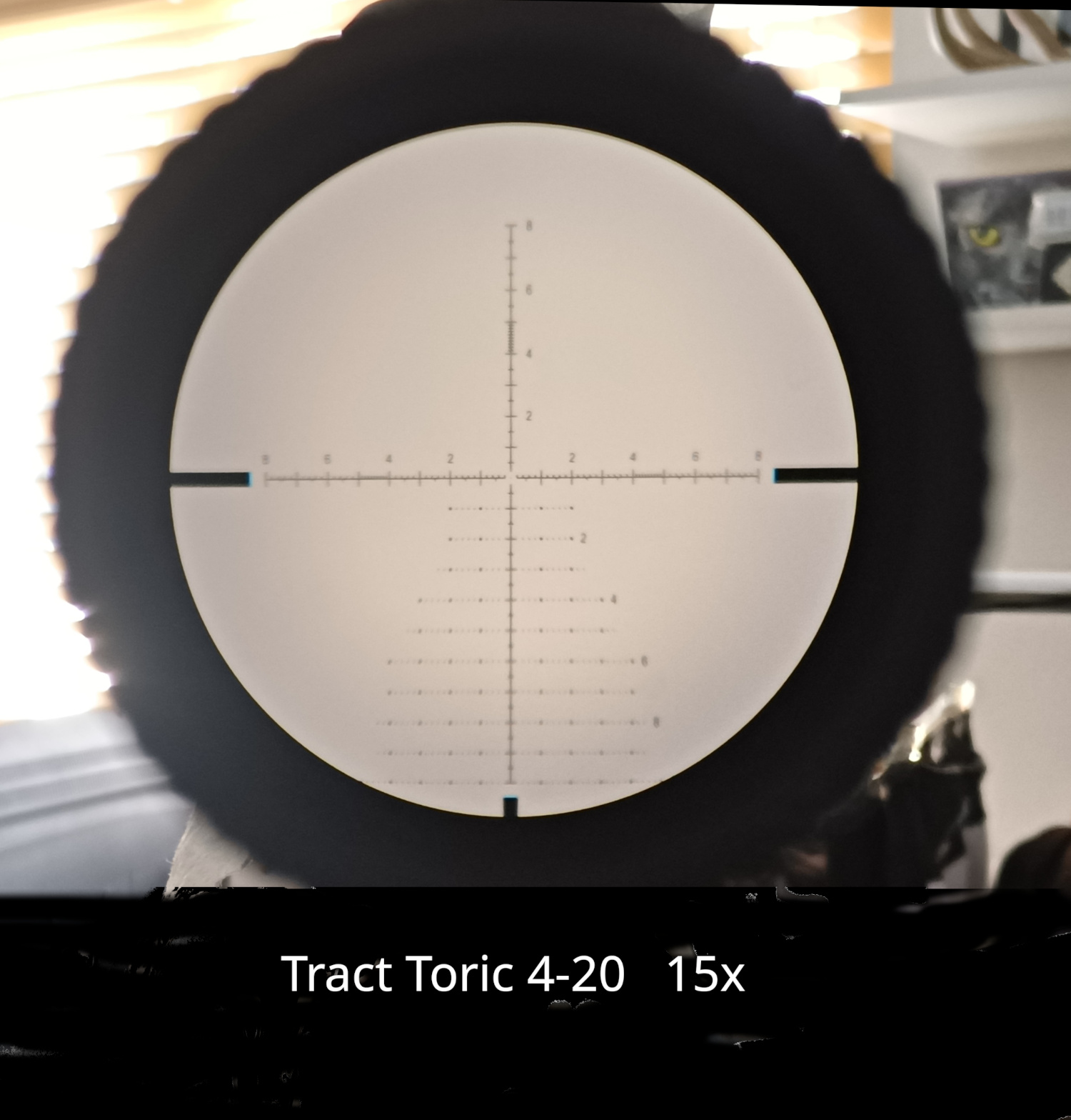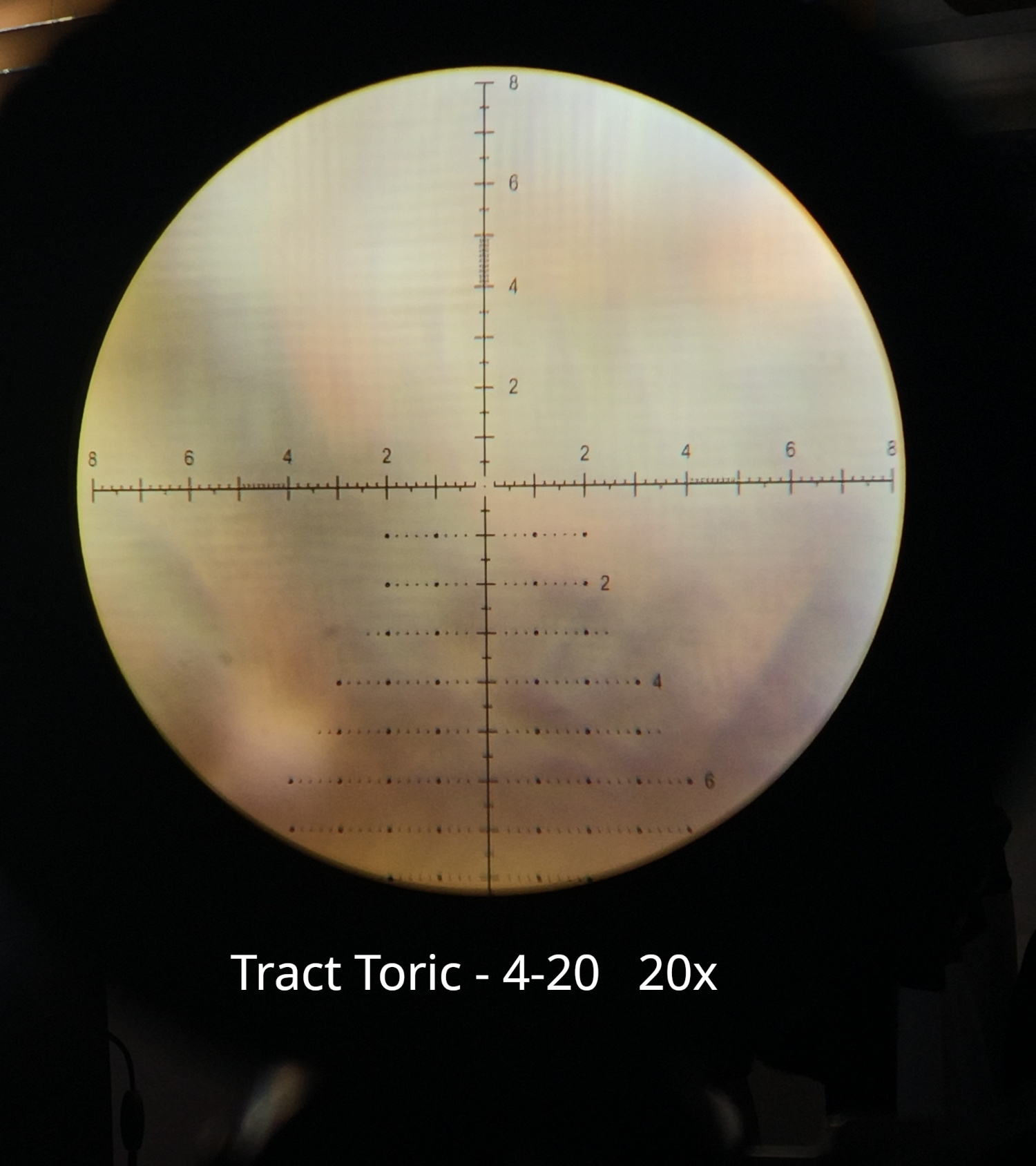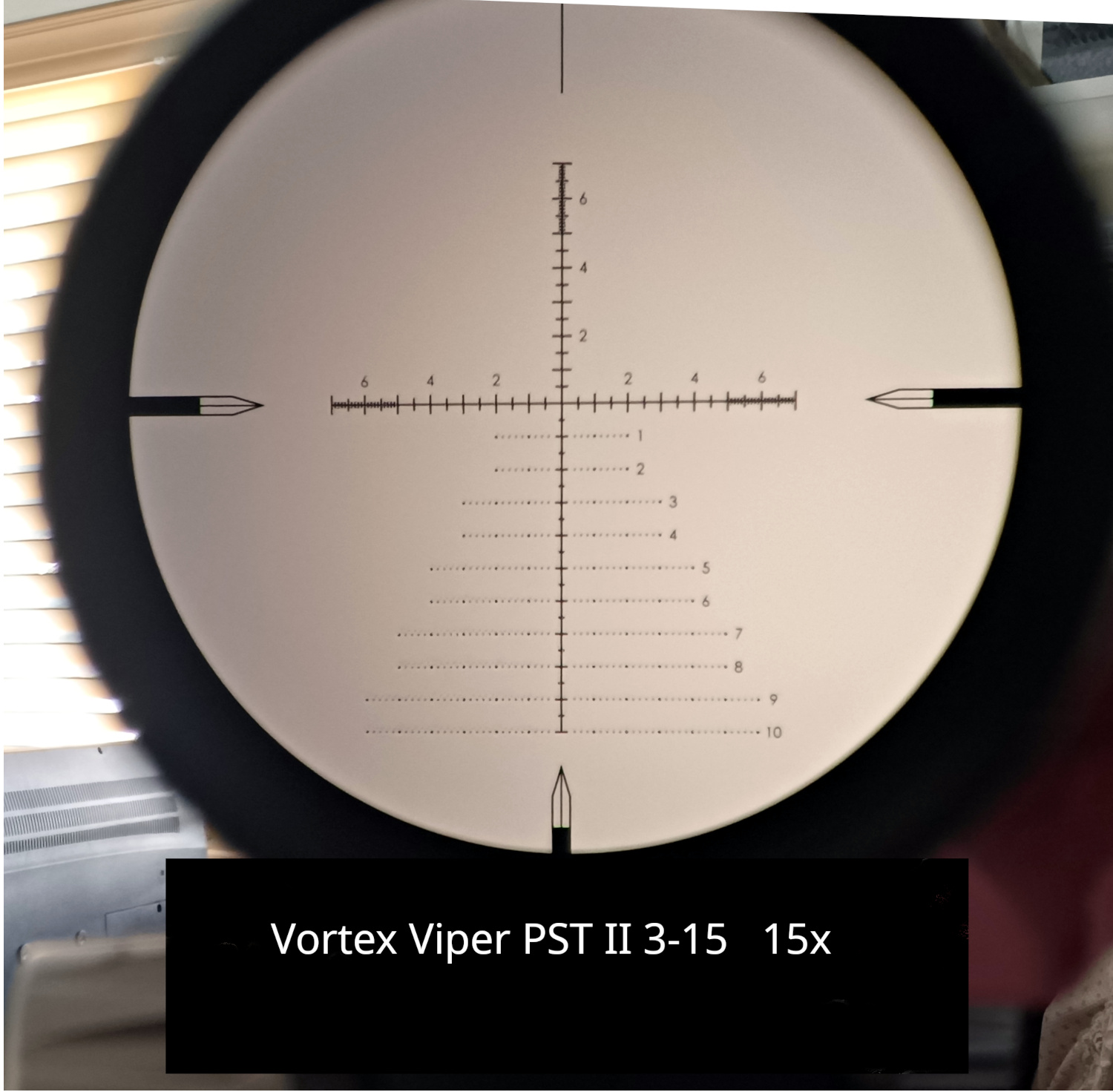I recently picked up a mid-range scope and was bummed to find it had a noticeably smaller field of view than I was expecting. I started researching FOV specs and discovered it can be difficult to compare specs across scopes due to different zoom ranges as well as limited or incompatible specs provided by mfgs.
I believe it's possible to use the reticle on a FFP scope as a method to indicate FOV as long as common magnification is used. No doubt there's room for error here but I think it makes for an easy visual comparison. If I'm off, let me know.
Starting off, here are reticle pics of my 3 current scopes at 15x & 20x. I used 15x & 20x as I believe these two magnification settings will cover most scopes.
Feel free to add your own but use 15x or 20x to keep results comparable. Putting something translucent in front of scope provided best conditions for camera to focus on reticle.

Tract Toric @ 15x. Estimating a bit less than 12 MRAD from center to edge.

Tract Toric at 20x. A bit over 8 MRAD center to edge.

Vortex Vipter PST Gen II 5-25x at 15x. A bit under 14 MRAD center to edge. Well done Vortex!

Vortex Vipter PST Gen II 5-25x at 20x. 10 MRAD center to edge.

Vortex Viper PST Gen II 3-15 at 15x. Like the Vortext 5-25, about 14 MRAD center to edge.
I believe it's possible to use the reticle on a FFP scope as a method to indicate FOV as long as common magnification is used. No doubt there's room for error here but I think it makes for an easy visual comparison. If I'm off, let me know.
Starting off, here are reticle pics of my 3 current scopes at 15x & 20x. I used 15x & 20x as I believe these two magnification settings will cover most scopes.
Feel free to add your own but use 15x or 20x to keep results comparable. Putting something translucent in front of scope provided best conditions for camera to focus on reticle.

Tract Toric @ 15x. Estimating a bit less than 12 MRAD from center to edge.

Tract Toric at 20x. A bit over 8 MRAD center to edge.

Vortex Vipter PST Gen II 5-25x at 15x. A bit under 14 MRAD center to edge. Well done Vortex!

Vortex Vipter PST Gen II 5-25x at 20x. 10 MRAD center to edge.

Vortex Viper PST Gen II 3-15 at 15x. Like the Vortext 5-25, about 14 MRAD center to edge.
